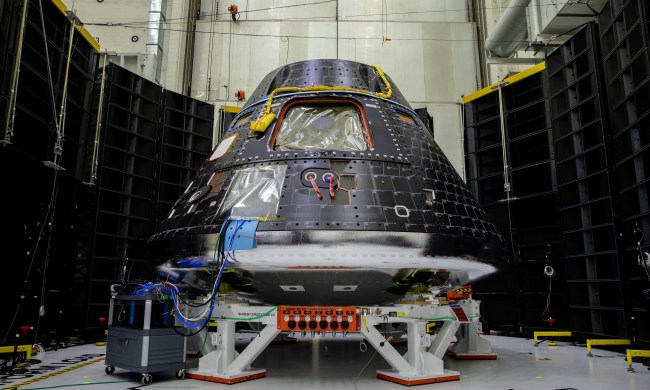
Being an astronaut may sound glamorous, but it isn’t all rocket launches and floating around the International Space Station. The vast majority of the time is spent in training with your feet planted on terra firma.
Take NASA astronaut Kate Rubins. True, she knows what it’s like to hurtle toward space inside a tiny capsule and live in microgravity conditions aboard an orbital outpost 250 miles above Earth. She also knows what it’s like to dress up in a mock astronaut suit and push a tool cart full of lunar tools through a field — because that’s exactly what she’s been doing as part of preparations for the Artemis III mission that will return NASA astronauts to the lunar surface after a five-decade hiatus.
And while Rubins and colleague Andre Douglas may look as if they’re heading home from a really wild costume party, this is actually serious stuff.
NASA has yet to select the two astronauts who will step onto the lunar surface in 2026 as part of the highly anticipated Artemis III mission, so for now it’s using a number of astronauts to test equipment and technology demonstrations that could be used in the mission.
In this case, Rubins, who has been to space twice up to now, and Douglas, who only recently qualified as an astronaut and has yet to go to orbit, spent a week at the San Francisco Volcanic Field north of Flagstaff, Arizona, practicing moonwalking operations for Artemis III.
During the tests, two integrated teams are working together to practice end-to-end lunar operations, NASA said. The field team in the Arizona desert comprises astronauts, NASA engineers, and field experts, while a team of flight controllers and scientists at NASA’s Johnson Space Center in Houston monitors and guides their activities.
A range of technologies are being tested to determine if they will be useful for the upcoming moon mission. They include a head-up display using augmented reality and lighting beacons that could help the crew navigate their way back to the lander during an expedition at the lunar South Pole.
Following each simulated moonwalk, everyone involved meets to discuss what’s been learned so that they can enhance preparations and refine the tested technologies.
“Field tests play a critical role in helping us test all of the systems, hardware, and technology we’ll need to conduct successful lunar operations during Artemis missions,” said Barbara Janoiko, director for the field test at Johnson Space Center. “Our engineering and science teams have worked together seamlessly to ensure we are prepared every step of the way for when astronauts step foot on the moon again.”
The Arizona desert has been a training ground for lunar exploration since the Apollo era, as it has some similarities to the lunar terrain, including craters, faults, and volcanic features.


